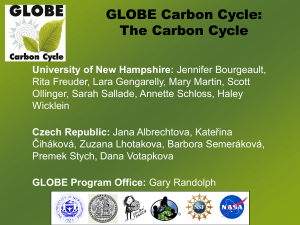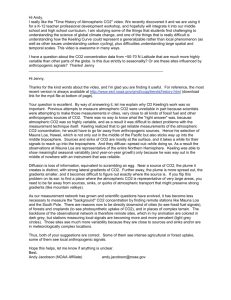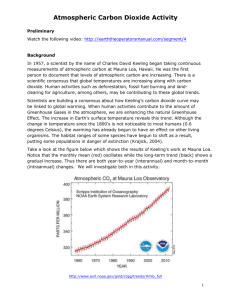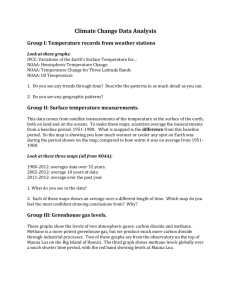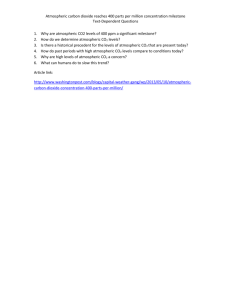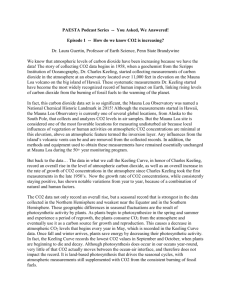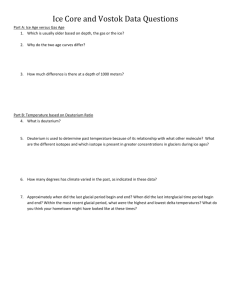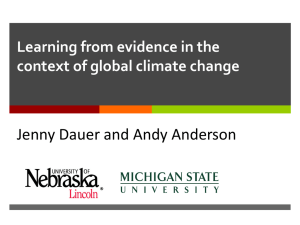The Greenhouse Effect Portfolio - bio
advertisement
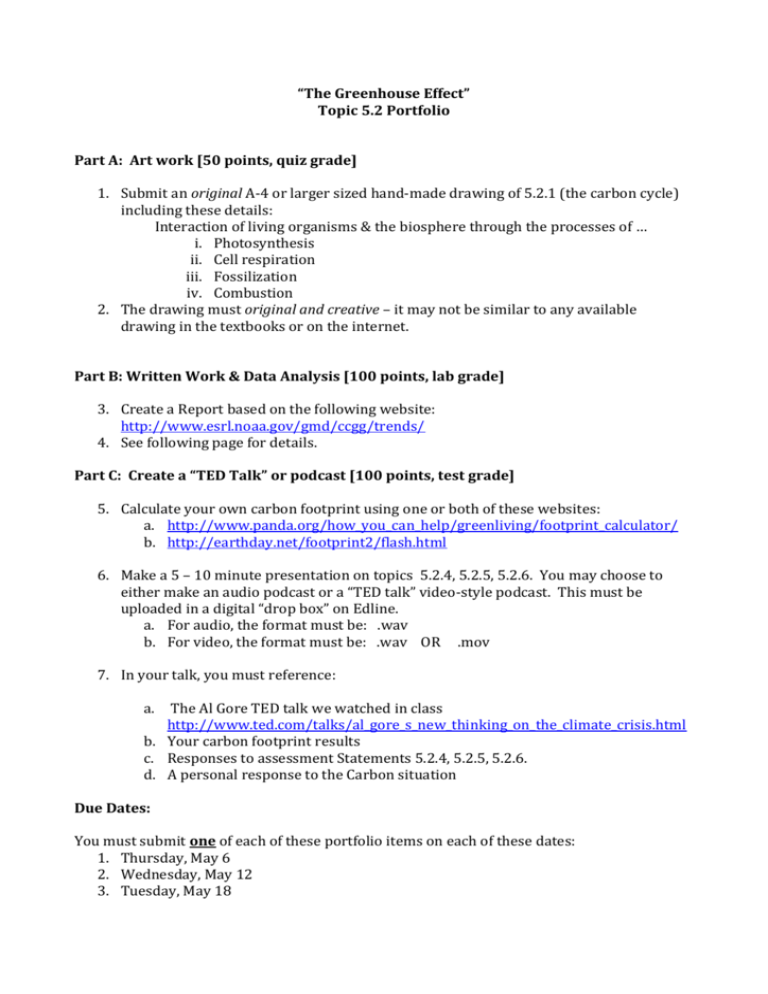
“The Greenhouse Effect” Topic 5.2 Portfolio Part A: Art work [50 points, quiz grade] 1. Submit an original A-4 or larger sized hand-made drawing of 5.2.1 (the carbon cycle) including these details: Interaction of living organisms & the biosphere through the processes of … i. Photosynthesis ii. Cell respiration iii. Fossilization iv. Combustion 2. The drawing must original and creative – it may not be similar to any available drawing in the textbooks or on the internet. Part B: Written Work & Data Analysis [100 points, lab grade] 3. Create a Report based on the following website: http://www.esrl.noaa.gov/gmd/ccgg/trends/ 4. See following page for details. Part C: Create a “TED Talk” or podcast [100 points, test grade] 5. Calculate your own carbon footprint using one or both of these websites: a. http://www.panda.org/how_you_can_help/greenliving/footprint_calculator/ b. http://earthday.net/footprint2/flash.html 6. Make a 5 – 10 minute presentation on topics 5.2.4, 5.2.5, 5.2.6. You may choose to either make an audio podcast or a “TED talk” video-style podcast. This must be uploaded in a digital “drop box” on Edline. a. For audio, the format must be: .wav b. For video, the format must be: .wav OR .mov 7. In your talk, you must reference: a. The Al Gore TED talk we watched in class http://www.ted.com/talks/al_gore_s_new_thinking_on_the_climate_crisis.html b. Your carbon footprint results c. Responses to assessment Statements 5.2.4, 5.2.5, 5.2.6. d. A personal response to the Carbon situation Due Dates: You must submit one of each of these portfolio items on each of these dates: 1. Thursday, May 6 2. Wednesday, May 12 3. Tuesday, May 18 Part B: Written Work and Data Analysis Report objective: Understand global climate change by analysing the changes in concentration of atmospheric carbon dioxide using historical records from Mauna Loa, Hawaii. Source: http://www.esrl.noaa.gov/gmd/ccgg/trends/ This report must be entirely in your own words (no quotes, please) and must CITE every source both in-text AND at the Works Cited at the end of the paper. Your introduction should include: 1. Background information about taking CO2 measurements. Reference this website: http://www.esrl.noaa.gov/gmd/ccgg/about/co2_measurements.html 2. What are the units for the amount of CO2 in the air? Why were those units chosen? 3. A map locating Mauna Loa, Hawaii. 4. What makes Mauna Loa an ideal location for measuring atmospheric CO2 levels? 5. Describe the difference between an “annual mean” and the “annual mean rate of growth” of CO2. Create a data table using Mauna Loa Annual Mean Data. What does the uncertainty reflect? Create a data table using Mauna Loa Annual Mean Rate of Growth Data. What does the uncertainty reflect? Create one or more graphs to allow the reader to quickly see trends in data. Analyse the data for trends. Spend at least a paragraph discussing the data. Conclude the lab by discussing the implications of the data. 1. Use the following website to reference atmospheric CO2 trends in the southern hemisphere: http://data.aad.gov.au/aadc/soe/display_indicator.cfm?soe_id=11 2. Using the above website and any other research, explain the relationship between rises in concentrations of atmospheric carbon dioxide, methane and oxides of nitrogen and the enhanced greenhouse effect (Assessment Statement 5.2.3). 3. Discuss how changes in CO2 levels might affect Hawaii’s ecosystem. 4. How have changing CO2 levels already affected the globe? 5. How could changing CO2 continue to affect the globe?

